Hampi Yatra
Kishkinda Ksetra
The name of this place is derived from Pampa, which is the old name of the Tungabhadra River on whose banks the city is built. Located within the ruins of Vijayanagara, the former capital of the Krishnadeva Raya’s Vijayanagara Empire, this place predates the city of Vijayanagara and continues to be an important religious center. Saint Vidyaranya established the seat of Vijayanagara Empire in 1336 A.D, with the help of his devotee disciples Harihara and Bukka. The empire later became famous for its support towards reconstruction of temples throughout India. It also became renowned for re-establishment of Indian culture, its support for music, art and literature. With the prime purpose of caring for the people and their welfare, this empire stretched physically covering Karnataka, Andhra and Maharashtra and became a by-word for golden rule. By 1500 CE, Hampi-Vijayanagara was the world's second-largest medieval-era city after Beijing, and India's richest at that time, attracting traders from Persia and Portugal. Hampi formed one of the core areas of the capital of the Vijayanagara Empire from 1336 to 1565, when it was finally laid siege to by the Deccan Muslim confederacy. The ruins are classified as UNESCO World Heritage Site, listed as the Group of Monuments at Hampi.
Hampi is 13 km from the town of Hospet, which has nice accommodations available and has a railway station. It is in Bellary district and is 376 km from Bangalore, 385 km from Hyderabad and 266 km from Belgaum.
Places in and around Hampi:
1. Shabari’s Cave
2. Pampa Sarovar
3. Anjaneya Hill - The Birthplace of Hanuman Ji
4. Sri Malyavanta Raghunatha Swamy Temple
5. Sri Kodanda Rama Temple
6. Sugriva’s Cave
7. Yantrodharak Anjaneya Temple
8. Rsyamuka Hill
9. Matanga Hill
10. Sri Vijaya Vitthala Temple
11. Sri Purandara Das Mandapa
12. Sri Hazari Rama Temple
13. Bala Krishna Temple
14. Sri Ugra Nrsimhadeva Temple
15. Hemakuta Hill
16. Sri Virupaksha Temple
1. Shabari’s Cave
Shabari’s Cave is the place where the great tribal devotee of Lord Ramacandra, Shabari lived and perform her tapasya (austerities). There is actual spot where Lord Ramacandra and Laxmana came and sat, and partook ber (berries) picked by her. Shabari’s cave is next to sacred Pampa Sarovar.
Shabari’s Pastime: Shabari was a hunter's daughter and belong to the Nishadha tribal community. The night before her marriage, she saw that thousands of goats and sheep were brought by her father, which were to be sacrificed for the marriage dinner. Moved by compassion, during the early hours of the morning, she left her home and ran away in search of a spiritual master. Many yogis and gurus rejected her since she was of low caste. Finally, after days of traveling, she met great Sage Matanga Rsi at the foot of the mountain Rsyamuka. She accepted him as guru, serving him with devotion. During the last days of sage Matanga, Shabari served him with great attention and care. Pleased with her service, Matanga Rsi blessed her that one day certainly Lord Ramacandra along with His bother Laxmana will come to meet her.
Many years passed by (as per the life span of the Treyta yuga) and Shabari had become an old woman. She continued to live in the same ashram awaiting Lord Rama. Always meditating on her guru's words, Shabari waited and waited for the arrival of Lord Rama. Every day, although it was difficult for her to walk, due to old age and infirmity, Shabari would still go out of her ashram early morning and pick ber fruits for Lord Rama. She would pluck a fruit, first taste it, and if it was sweet she would put it in her basket and discard the bitter ones. She wanted to give the good and sweet fruits to Lord Rama. The thought never came into her mind that she should not taste the fruits before they were offered to a deity. Thus collecting a few fruits, Shabari went back to her ashram and eagerly anticipated Lord Rama's arrival.
Meanwhile, after mother Sita was kidnapped by Ravana, Lord Rama and Laxmana, in separation of Sita, had traversed hundreds of miles and eventually came upon an enormous monster named Kabandha. Kabandha explained to Them that close to Pampa Sarovara, Shabari was waiting for Them, to serve Them.
Arrival of Lord Rama: Then Rama and Laxmana came to Pampa Sarovara. There, They saw some caves on the banks of the lake and a little straw hut. There, sitting on the ground on a small kusha grass mat was an old emaciated lady. That lady, was indeed, Shabari. Even though hundreds of other yogis were waiting to receive Lord Rama in their ashrams, Lord Rama went only to Shabari's ashram because of her sincere devotion. She was wearing just a bark of tress, her hair was matted, she was constantly with tears in her eyes chanting the holy names of Lord Rama. When she saw Rama and Laxmana, she immediately recognized Them, because by the grace of her guru, she was meditating on Rama coming for many, many years with such anticipation, eagerness. Srila Rupa Gosvami, tells that the price of Krishna consciousness is this eagerness. And to cultivate this feeling of separation makes us very, very eager. Sri Caitanya Mahaprabhu.
yugayitam nimesena chaksusa pravrsayitam
sunyaitam jagat sarvam govinda-virahena me
Feeling your separation Govinda, the whole world is like a dreary void and each moment is like a yuga. But in that eagerness of separation, how much intensely he was chanting the holy names of the Lord, how intensely he was eager to serve the Lord! Shabari had such faith in her guru. She knew that Rama would come. Years and years and years passed and she sat there just doing her meditation and doing her seva and now the fruit of all of her prayers, of all of her sadhana, had manifested. She had a chance to personally serve the Supreme Personality of Godhead. After offering her dandavat pranam, she offered him a sitting place and offered him prayers and gathered some of the forest fruits to satisfy Rama and Laxmana.
On seeing her most beloved Lord Ramacandra, Shabari became ecstatic and said, "There were so many exalted yogis waiting for your darshan, but you came to this unworthy devotee. This clearly shows that you will neither see whether a devotee lives in a palace or humble hut, whether he is erudite or ignorant neither see caste nor colour. You will only see the true Bhakti. I do not have anything to offer other than my heart, but here are some berry fruits. May it please you, my Lord."
Saying so, Shabari offered the fruits she had meticulously collected for Lord Rama. When Rama was tasting them, Laxmana raised the concern that Shabari had already tasted them and therefore unworthy of eating. To this Lord Rama said, “I have tasted many types of food, but nothing equals these ber fruits offered with such devotion. You taste them, then alone will you know. Whomsoever offers a fruit, leaf, flower or some water with love, I partake it with great joy." So in her enthusiasm to serve Rama, she will take each little fruit and take a bite of that and if it was bitter, she would put it aside for her to eat later and if it was sweet she took it out of her mouth and present it to Rama. Now according to the standards of deity worship, this is very offensive, but because of her love Lord Ramacandra accepted the saliva of her mouth as the sweetest part of the fruit. Lord Krishna tells in Bhagavad-Gita chapter 9 verse 26, “Fruit, flower, water, even a leaf, if it’s offered with love I will accept it.” It is the love that makes everything sweet for Krishna. Shabari was so poor, she did not have nice plates, she didn’t have nice house, she didn’t have nice food, but she had love.
Then Lord Rama narrated to her the incident of Sita’s kidnapping. Shabari said, “Across this Pampa Sarovar is Rishyamukha Mountain where Sugriva lives. Sugriva is one of the chiefs of the monkeys. He has been exiled from his kingdom and his wife Ruma has been abducted and is being held captive by his brother Bali. No one in the world can understand what Sugriva is going through better than you, and no one in the world can understand what you are going through better than Sugriva. If you help him to get his wife and his kingdom back, then he will search the entire earth over and over again, relentlessly, until he finds Sita and brings her back. And his minister Hanuman is the most empowered transcendental person who can do anything.”
Touched by her pure Bhakti, Lord Rama and Laxmana bowed down at her feet. Rama wanted to see the ashram of Matanga Rsi. So Shabari gave him a tour. Laxmana and Rama were walking beside her and she showed them that this is where they performed their yajnas - because in Tretayuga yajna was the yuga dharma - and it was still burning even though over a decade had passed since they left. She said, “These are the flowers that they made into the garlands to decorate their beloved Lord.” And the garlands were still fresh and fragrant. She said, “All the sages they just wore tree barks and here is the place where after washing their clothes they would dry them,” and there were tree bark hanging and they were still wet from being washed. Because of their love and their devotion to Rama, everything was still fresh as it was years and years before when they left it, just so that Rama could see it. Lord Rama and Laxmana were so happy by the simplicity of Shabari.
Srila Bhaktisiddhanta Sarasvati Thakur tells that the first principle of true devotional service or bhakti is simplicity. Simplicity means without duplicity. It means to have no ulterior motives. It means to really deeply be satisfied with what’s really important - the opportunity to serve. For a devotee just the chance to serve, whether we have millions or billions of dollars, or whether we are living on a piece of straw on the bank of a lake wearing tree bark, it really doesn’t make much difference.
That value in life is simplicity. That makes us so dear to Krishna. King Prataprudra, even though he was the king of the entire domain of Orissa, he had a simple heart. He was happy serving Lord Caitanya whether he was sweeping the street or ruling over armies and treasuries. And it was the simplicity of his heart that made him so dear. Sri Caitanya Mahaprabhu gave us this message.
Lord Rama told Shabari, “You have satisfied me by the simplicity of your love and devotion. Now you can go and join your guru again and all of your god brothers and god sisters.” By his grace Shabari understood that her life was perfect and she in meditation, she sat in the sacred fire. Suddenly she was consumed by the fire, but she had such faith that a moment later she had a spiritual body and she came out from flames. She was no longer emaciated with matted hair. She had a heavenly celestial body with such beauty, gowned with such elegance. And then with the permission of Rama and Laxmana she returned to join her guru in the loving service of the Lord, which was her only desire. When Rama came to meet Shabari, her joy was not in seeing Rama; her joy was in serving Rama. ‘Don’t try to see Krishna; try to serve Krishna so that he is happy to see you.’ Yes, she was seeing the Supreme Absolute Truth, the personality of Godhead face to face, but her joy was in serving him and in pleasing him.
Entrance to Shabari’s Cave
Inside the Shabari’s Cave
2. Pampa Sarovar
Pampa Sarovar, is one of the five sacred sarovars, or lakes, located to the south of the Tungabhadra River. Lord Caitanya and Lord Nityananda Prabhu had visited Pampa sarovar during Their travels. Another one of them is Man Sarovar which is in China (Tibet). Pampa Sarovar is just next to Shabari’s cave. Shabari used to take water from her daily needs from this Sarovar. Pampa Sarovar is regarded as the place where Pampa, a form of Parvati, performed penance to show her devotion to Siva. There is a small Pampa Ambika temple next to the kunda.
Transcendentalists discussing the pastimes of Lord Rama at Shabari’s Cave and Pampa Sarovar
Beautiful surroundings on the way near Shabari’s Cave
3. Anjaneya Hill - The Birthplace of Hanuman
Anjaneya Hill is the birthplace of Hanuman and is located in the centre of Anegundi area (original Kishkinda). Hanuman is the personification of seva. He perfected his life through selfless service to Sri Rama. It was Hanuman who delivered the message to Sita after discovering her, then delivered Sita’s message back to Rama. Hanuman was prominent in building the bridge across the ocean to reconnect Rama and Sita. Hanumanji was the most instrumental to fight the battle against the Rakshasas and assist Rama in overcoming Ravana. And it was Hanuman who was sent by Rama after the great war of Lanka to bring Sita back to be reunited with Him. Hanuman, all of the incredible pastimes that he performed, he never took credit for anything. He was constantly chanting the holy names of the Lord and he gave all credit to Lord’s grace, who was always present within the holy names: Hare Krishna Hare Krishna Krishna Krishna Hare Hare, Hare Rama Hare Rama Rama Rama Hare Hare.
This chanting of Krishna’s names, Rama’s names wakes us up, because in this age of kali people are so soundly sleeping. The loud chanting of the holy name is required. Hanuman lives forever to give protection, inspiration and empowerment wherever devotees sincerely chant the Lord’s holy names, because he knows there is nothing that gives pleasure to the Lord greater than being the servant of the servant of the servants; that is what he lived for.
4. Sri Malyavanta Raghunatha Swamy Temple
Sri Malyavanta Raghunatha Swamy Temple is on the road toward the Kampli. It is here that Lord Rama and Laxmana stayed during the 4 months of rainy season (chatur masya) after Sugriva had been coronated on the throne. Lord Rama and Laxmana also stayed here when Hanuman and others went in search for Sita. The deities of Lord Rama and Laxmana are in sitting positions, with a standing Sita, and Hanuman Ji kneeling near Them carved from a boulder. These are the only Deities of Lord Ramacandra in sitting position. The mood here depict how Rama and Laxmana were discussing the means to save kidnapped Sita. Down the hill from here heading west is Madhuvan, which has a little temple of Hanuman. It was here where the monkeys halted to enjoy the gardens of fruit after Sita was found.
5. Sri Kodanda Rama Temple
Sri Kodanda Rama Temple marks the place where Sugriva was crowned as the King of Kishkinda. The rectangular garbha-griha of the temple contains 15 feet tall standing deities of Lord Rama, Sita, Laxmana and Sugriva. These deities are carved out of a natural boulder. Sri Kodanda Rama Temple is situated towards the east of Hampi at the end of the Virupaksha Bazaar. A small pathway from Virupaksha Bazaar at the east end leads along the river to Kodanda Rama Temple. This temple faces Chakra tirtha, the most sacred bathing ghat in the river. Close to Sri Kodanda Rama temple is Rsyamuka hill where Sugriva took shelter and lived for several years when banished by his elder brother Vali from his kingdom Kishkinda.
6. Sugriva’s Cave
Sugriva’s Cave is the place where Sugriva hid the jewels dropped by Sita, when the demon Ravana was taking Her. This is a naturally formed cave by huge boulders one leaning over the other. This is located almost on the river shore close to Sri Kodanda Rama temple. The colored pattern at the rock in locale parlance is called Sita Konda. A number of carved footprints can be seen on the floor of this flat surface. This depicts the footprints of Lord Ramacandra and Laxmana. Near the Cave at the riverside Sugriva met Lord Rama and Lakshmana when they came here in search of goddess Sita.
7. Yantrodharak Anjaneya Temple
Yantrodharak Anjaneya Temple is the place from where Hanuman first saw Lord Rama and His brother Laxmana. Situated right behind the Sri Kodanda Rama temple, this is one of the most sacred places in Hampi. The temple is dedicated to Hanuman. The temple has a very interesting story behind its origin. Sri Vyasa Tirtha, a great scholar saint during the reign of King Krishnadeva Raya, used to go to very calm spots on the banks of river Tungabhadra and meditate interrupted. One day, while he was meditating in a hillock near Chakra tirtha, an image of Hanuman kept coming to his mind. This happened only at that particular spot and nowhere else, not even in nearby hillocks.
Sripad Madhavacharya (an incarnation of Hanuman) appeared in the dreams of Sri Vyasa Tirtha and instructed him to install a deity of Hanuman next time. The next time Vyasa Tirtha saw the image in the middle of his meditation, without any delay, he drew the image from his mind on to a rock using an angara (coal used by brahmanas using puja performance). To his surprise, a monkey came to life from the rock and jumped out of the rock and his drawing would disappear. He repeated the process of drawing and every time, a monkey would jump out of the rock and the drawing would disappear. This happened 12 times.
Full of surprise, Sri Vyasa Tirtha finally decided to bind the image of Hanuman in a yantra. A small temple was built there and hence the temple has the name Yantrodharak Anjaneya. In the core of the yantra is the deity of Hanuman in padmasana position. This is probably the only temple of Hanuman in a sitting position. The yantra here is a form of binding which looks like a six-cornered star. The star is encircled in a circle with flames going outwards giving it the drawing look of a sun. A closed, benzene-like ring of 12 monkeys holding each other’s tails can also be found around the star and the sun which forms the outermost structure of the yantra.
8. Rsyamuka Hill
Rsyamuka
hill were
Sugriva took shelter and lived for several years when banished by his elder
brother Vali from his kingdom Kishkinda. Due to Rishi Matanga’s curse on Vali
that he cannot enter the Rsyamuka hill, this was the only place on the earth
which was free from the coming of Vali. When Vali was chasing Sugriva, being
very tired and distressed by Vali, Sugriva remembered the curse of Rsi Matanga
for Vali, and he took shelter here.
9. Matanga Hill
Matanga Hill, the name comes after the great sage Matanga who used to live on this hill in Treta Yuga, the period of Ramayana. Sage Matanga was a great devotee. He was the spiritual master of Shabari. During the last days of sage Matanga, Shabari served him with great attention and care. Pleased with her service, sage Matanga blessed her that one day Lord Ramacandra along with His bother Laxmana will come to meet her. This is also the place where Sugriva benefited from the magical protection of the sage Matanga who had placed a curse of death on Vali, if he dared to enter Rsyamuka Hill, which is close by. A beautiful view of Achyuta Raya temple can be seen from on top of this hill.
10. Sri Vijaya Vitthala Temple
Sri Vijaya Vitthala Temple is where the famous Lord Vitthala came from Pandarpur when the Pandarpur temple was attacked by the Mughals. Lord stayed here for some time and was worshipped by His devotees before returning back to Pandarpur. Local legend has it that Lord Vitthala, when He had moved here, found it too grand to live in and thus returned to His own humble home in Pandarpur. The famous Stone Chariot is situated to the east of the temple hall. The stone wheels of the chariot actually revolve.
Sri Vijaya Vitthala Temple
Musical pillars at Sri Vijaya Vitthala Temple
Devotees listening to Krishna katha at Sri Vijaya Vitthala Temple
11. Sri Purandara Das Mandapa
Sri Purandara Das
Mandapa is
a small open pillared pavilion dedicated to the famous Vaishnava poet Purandara
Das who lived in Hampi. It is here that poet Purandara Das sat and composed the
devotional songs. Even today the devotional songs composed by him are sung at
the Carnatic music (the south Indian classical music) concerts. He composed
more than 75,000 devotional compositions. They were carried over generations by
the oral tradition. But today only about a thousand or so compositions are
known to exist. A small sculpture of Purandara Das with tambura (an
ancient stringed musical instrument) can be seen at the pavilion. The pavilion
is located at the river shore near Sri Vijaya Vitthala temple. This is one of
the areas at Hampi where people perform religious rituals. The pavilion is
almost at the edge of the river and that during monsoon season the river water
touches the platform or even submerges it sometimes. Every year a classical
music concert is held in this area to celebrate the birth anniversary of
Purandara Das. Usually they are held for 2-3 days during the months of
January/February. Musicians from national and international repute participate.
12. Sri Hazari Ram Temple
This temple for Lord Rama is popularly called “Hazari Rama Temple” or “Hazara Rama temple” because of the large number of Ramayana panels on the walls. This temple was the private place of worship of the royal family. It was originally called Hajana Rama, which in Telugu language means “the palace temple”. The Ramayana epic is carved in detail. Incidents in the story like Dasaratha performing a sacrifice to beget sons, the birth of Lord Ramacandra, His exile into the forest, the abduction of Sita and the ultimate fight between Lord Ramacandra and Ravana are al carved in a vivid manner. In these panels, the story of Rama and through it the triumph of good over evil is brought out. Through the temple is small, it is fine example of the skill of Vijayanagar’s sculptors. On one of the wall there are two rare depictions of Vishnu as the Buddha.
13. Bala Krishna Temple
Bala
Krishna Temple was built by Krishna Deva Raya in 1513 A.D. to
commemorate his victory over Gajapati, the ruler of Orissa. After the victory
he got the Deity of “child Krishna” and brought it to Vijayanagar as war
trophy. He then built this temple for worship of the Deity. This deity is now
resting in the Government Museum at Madras.
14. Sri Ugra Nrsimhadeva Temple
Sri Ugra Nrsimhadeva is nearby to the Bala Krishna temple. Deity is 6.7m tall monolith of Ugra Nrsimhadeva, the half-man-half-lion incarnation of Lord Krishna, sitting in a cross-legged position. An inscription nearby states that it was hewn from a single boulder in 1528 during the reign of Krishnadeva Raya. The original image contained His consort Lakshmi devi sitting on His lap. This image was destroyed during the Mughal invasion. Currently only a hand of the goddess resting on His waist can be seen. Nearby is a shrine with huge 3 meter high Siva-linga called Badavilinga. It is permanently surrounded by water that comes through an ancient channel.
Ugra Nrsimhadeva Temple
Ugra Nrsimhadeva Temple
Badavilinga Temple near Ugra Nrsimhadeva Temple
Badavilinga Temple
15. Hemakuta Hill
Hemakuta Hill is south of the Virupaksha temple. Lord Siva did penance on the Hemakuta Hill before he married Parvati (Pampa). This was also the place where Lord Siva burnt Kama, the God of lust. The exact place where Kamadeva was burnt is the site of Manmath tank close to Virupaksha temple. This sacred hill lies to the right of the Virupaksha temple.
16. Sri Virupaksha Temple
Known as the Pampapathi temple, it is a temple related to Lord Siva, situated in the Hampi Bazaar. Temple is located at the foot of Hemakuta hill and is the core of the village of Hampi. It predates the founding of the Vijayanagar Empire. The temple has a 160 foot (49m) high tower at its entrance. Apart from Lord Siva, the temple complex also contains shrines of the goddesses Bhuvaneshwari and Pampa. What was once a small shrine, in course of time, developed into a large complex under the Vijayanagar Empire.
Hampi Yatra 2014 - Transcripts from HH Radhanath Swami Maharaj lectures:
- Hampi Yatra - Day 1 morning: Birth of Hanuman
Youtube: https://www.youtube.com/watch?v=730O37OCV14
- Hampi Yatra - Day 2 evening: Glorifies Sri Murari Gupta
Youtube: https://www.youtube.com/watch?v=47sl4yyyoY4
- Hampi Yatra - Day 2 morning: Story of Lord Rama allying with Sugriva
Youtube: https://www.youtube.com/watch?v=6aIFo11Tp4I
4. Hampi Yatra - Day 2 evening: Significance of Damodara Lila
Youtube: https://www.youtube.com/watch?v=lGK3DHzvcPw
- Hampi Yatra - Day 3 morning: Hanuman’s Finding Mother Sita
Youtube: https://www.youtube.com/watch?v=-AHK67B8HGo
- Hampi Yatra - Day 3 evening: Lord Krishna lifting Govardhana Hill
URL: http://radhanathswamiyatras.com/humpi-udupi-yatra-2014/3764/
Youtube: https://www.youtube.com/watch?v=7FUTztRrSlk
- Hampi Yatra – Day 4 evening: Story Mother Sita Reunites With Lord Rama
Youtube: https://www.youtube.com/watch?v=Z2c7OfFOtqU
Directions to reach Hampi: Hampi is 13 km from the town of Hospet, which has nice accommodations available and has a railway station. It is in Bellary district and is 376 km from Bangalore, 385 km from Hyderabad and 266 km from Belgaum.
Shabari Drama: https://www.youtube.com/watch?v=BY2rGmu9_Gg
Mayapur TV: http://Mayapur.tv / Vrindavana TV: https://vrindavan.tv/
Holy Pilgrimages: www.Holy-Pilgrimages.com / Facebook: www.facebook.com/HolyPilgrimages
Holy Dham: www.HolyDham.com
Hare Krishna Hare Krishna Krishna Krishna Hare Hare |







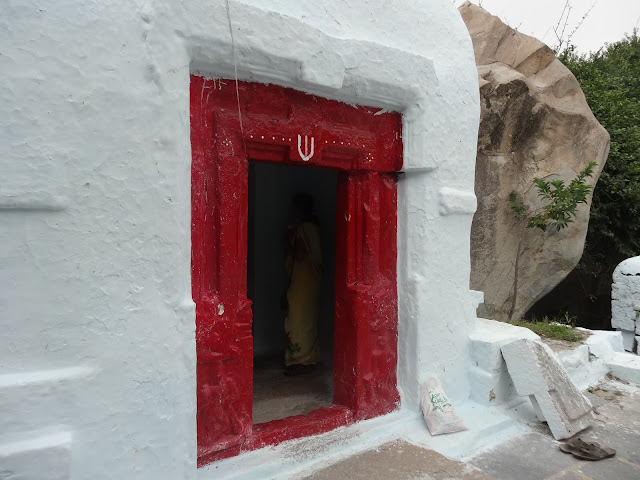
















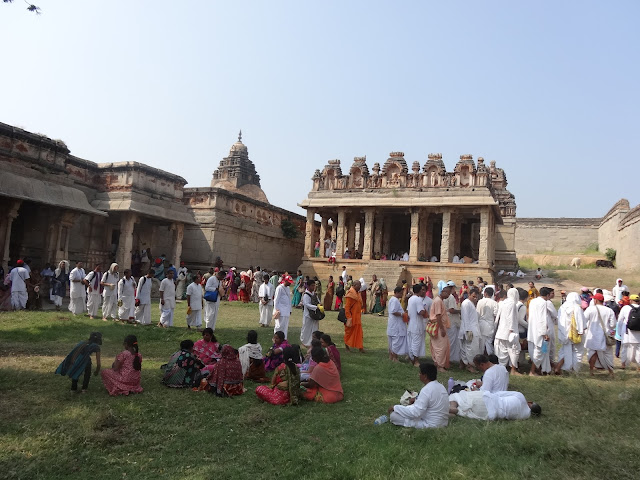
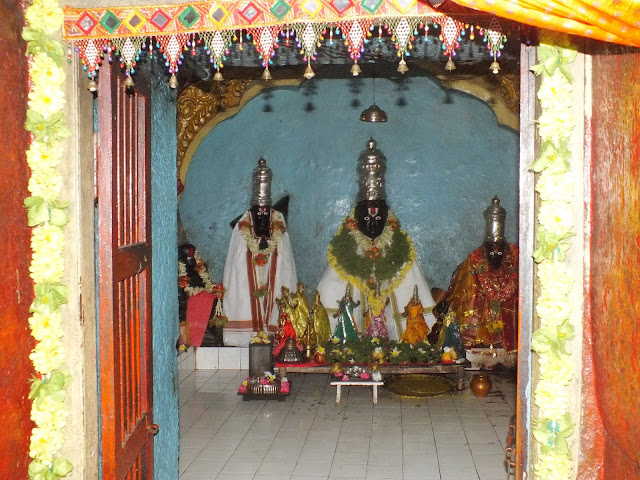






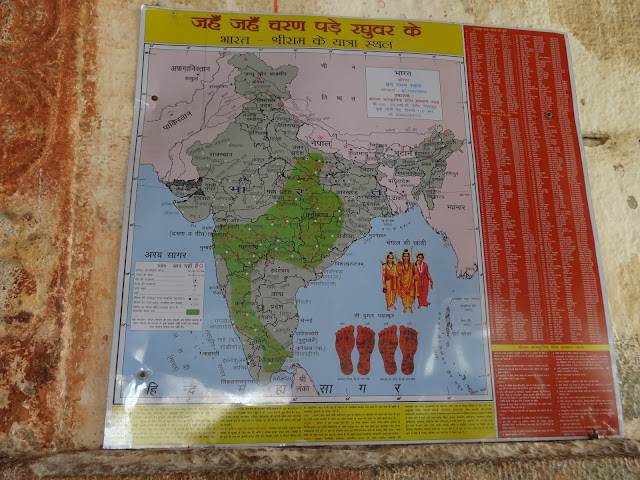





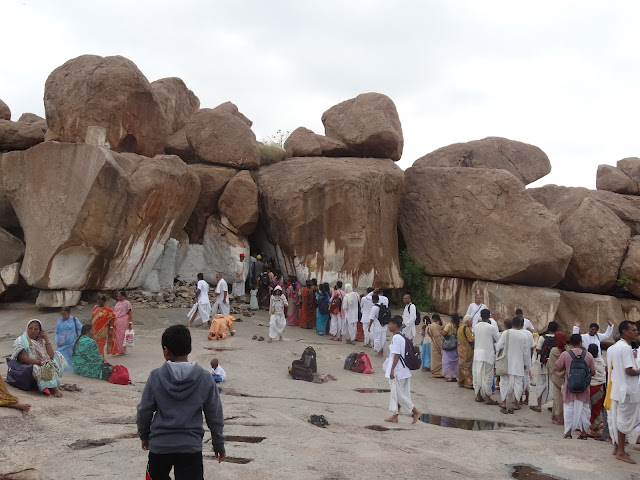








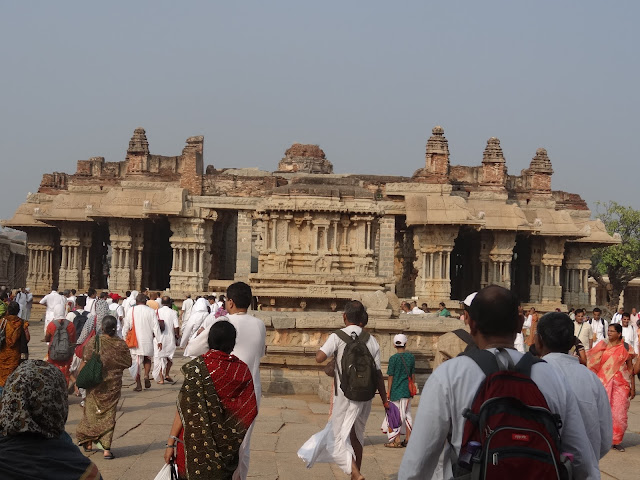







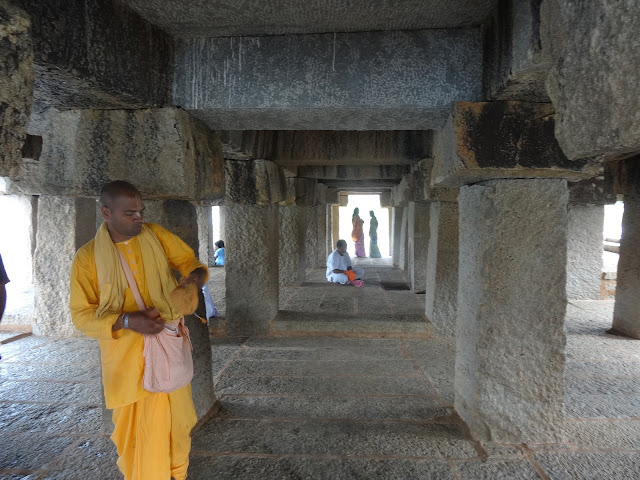








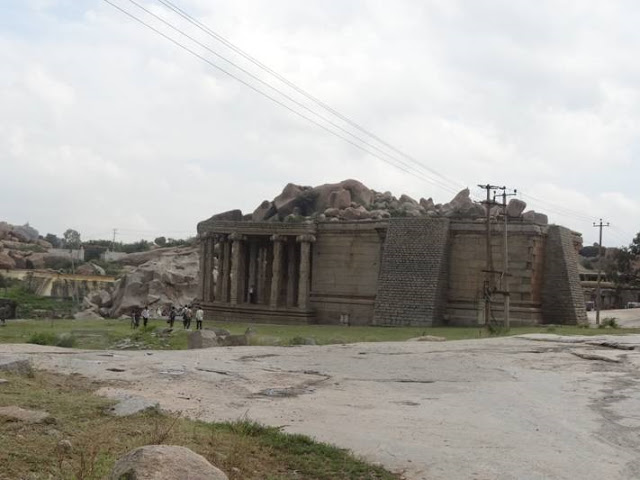







Comments
Post a Comment